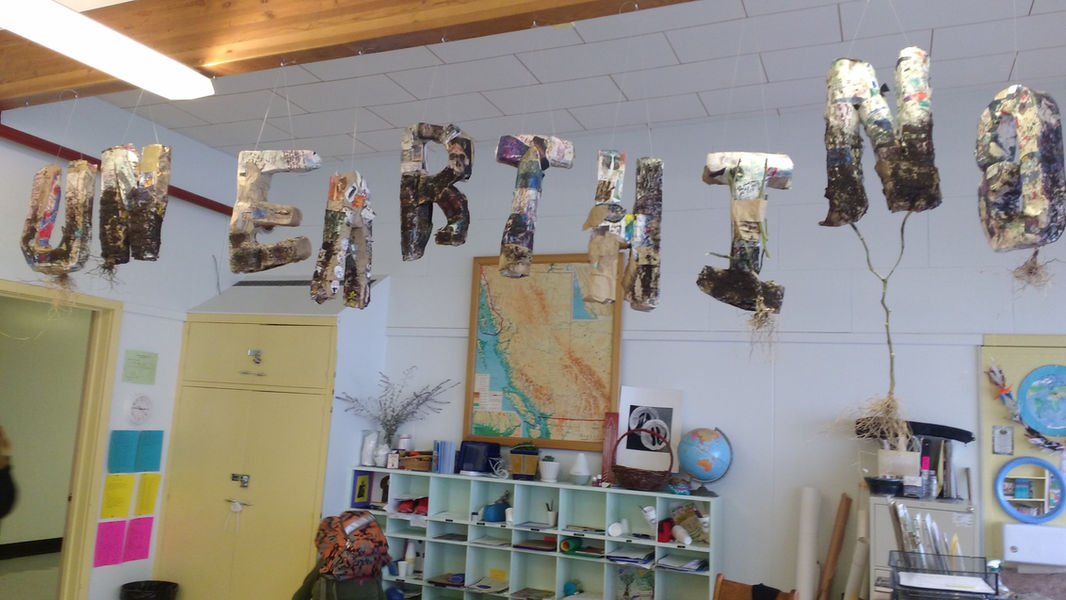
INQUIRY BASED LEARNING
Inquiry based learning has been transforming classrooms into flexible and adaptive spaces that embrace student interests and empower them to know themselves as learners. This constructivist approach to learning allows for an emergent curriculum that emphasizes the kinds of thinking that artists engage in. In my classroom, this is reflected in the ways in which I create a culture of rigour and collaboration, give students voice and choice, prompt questioning and capture learning with digital tools.
My research based approach to inquiry in art includes:
Teaching for Artistic Behaviour (TAB)*: the classroom is our studio and the children are the artists.
Opportunities for material exploration. (Sylvia Kind, Olivia Gude)
Student input in determining themes, driving questions, learning activities and assessment. (Vygostky, Piaget)
Choices in art materials and project outcomes.
Portfolio assessments that capture learning over time. (Harvard Arts Propel).
Public celebrations of learning that show what students know and can do. (Trevor Mckenzie, Project Based Learning)

LEARNING SPACES
How we organize and cultivate learning spaces is an essential aspect of fostering student agency. Providing a variety of experiences and contexts for learning demands a creative use of classrooms and facilities and seeking out places beyond the school walls. My classroom spaces are organized with flexibility and student agency in mind so that different arrangements can support and adapt to the needs of the students and the stages of their learning. I believe that students should engage with materials and concepts in the same ways that artists do: through material exploration and play, targeted skill building, and an understanding of their own thinking as artists.
Some Key Characteristics:
Materials are easily accessible to students and encourages choice.
Students have opportunities for material exploration to understand the expressive potential of a given medium. When students are ready to design their own projects, they are well prepared to know which materials will support their ideas.
Embraces TAB (Teaching for Artistic Behavior)
Flipped Classroom: Providing instructional materials for students via stations, videos and handouts allows students to explore materials independently. Students receive targeted skill building and timely feedback.
Includes outdoor spaces, field trips to local galleries and museums and opportunities for students to present work in their community.

ASSESSMENT
Olivia Gude reminds us that, “It’s not our job to assess student artwork; it’s our job to
assess students’ learning, students’ developing capacities for creative experimentation, and
students’ capacities for making meaningful connections to their lives through art experiences.”* The idea that assessment is an important tool for learning is key to my teaching philosophy in art. I practice backwards planning and formative assessment in tandem so that self-reflection, peer feedback and student input can drive how learning is measured. I believe that with effective assessment, mistakes, failures and trials all have a valuable place in understanding ourselves through art. It is important that my students see assessments as an opportunity to learn about and express themselves, not an indictment of their ability. I embrace digital tools have made capturing, sharing and reflecting on learning manageable and immediate, ensuring a much more robust picture of our learners.
Key Characteristics:
Clear learning expectations.
Use of self-reflections and peer assessment to revise and reflect on learning.
Use of digital tools to capture, share and differentiate learning goals.
Use of student input to design assessment tools.
Informed by Harvard Arts Propel.
Key Tools:
Google Classroom/Edmodo
Freshgrade Digital Portfolio
 |  |  |
|---|---|---|
 |




















